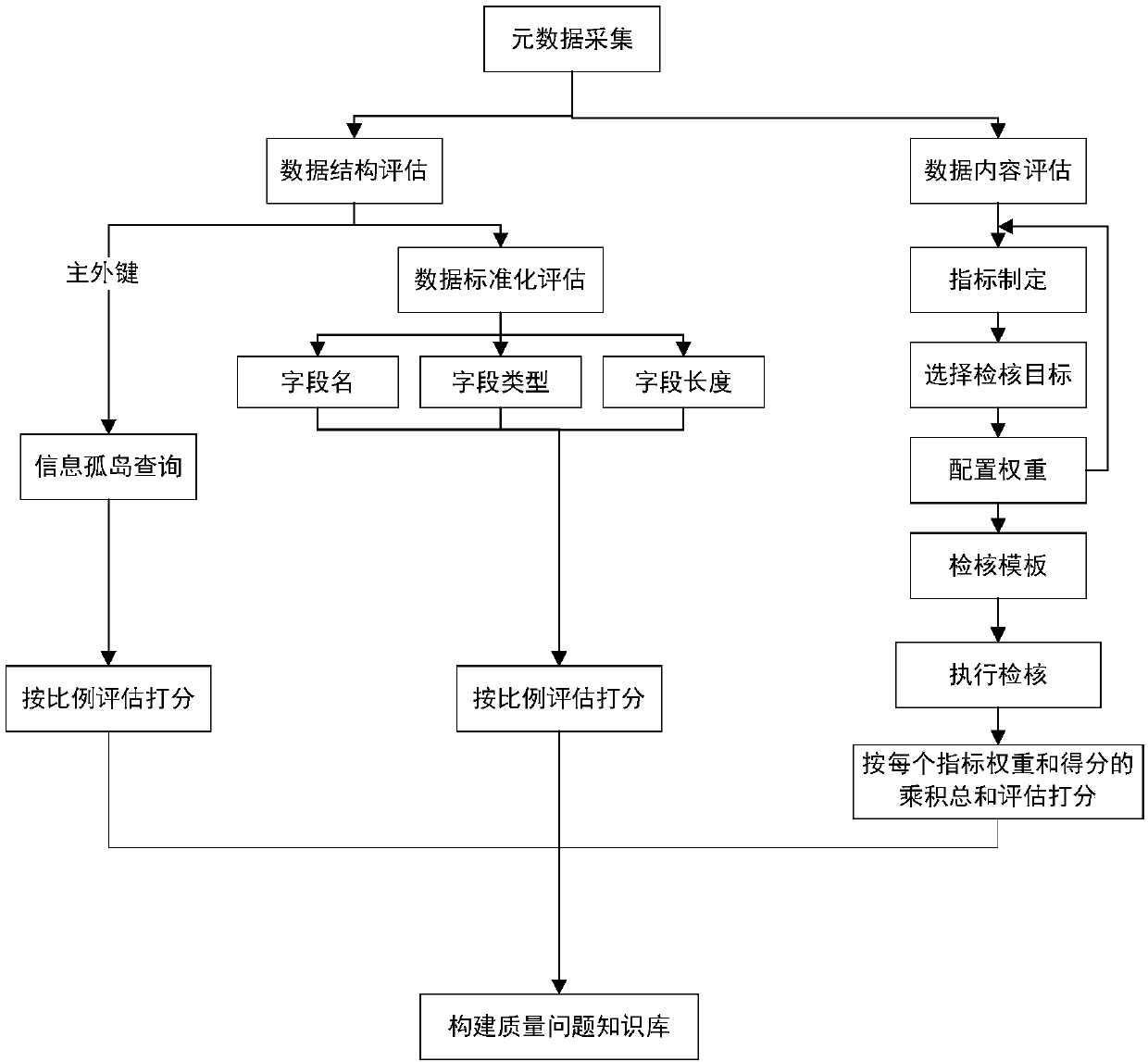Data quality-based data management system
A data quality and data technology, applied in the field of data governance, can solve problems such as lack of data governance, achieve the effect of improving consistency and standardization, improving usability and operational efficiency, and improving data governance capabilities
- Summary
- Abstract
- Description
- Claims
- Application Information
AI Technical Summary
Problems solved by technology
Method used
Image
Examples
Embodiment Construction
[0018] Such as figure 1 As shown in , the system collects metadata, and forms the metadata database of the specified system by configuring the underlying data sources and suspension points. Secondly, screen the data in the metadata database for information islands, that is, extract the primary and foreign key associations collected in the metadata database, and list the information island data that is not linked by primary and foreign keys to form a data flow connection on the front-end page displayed in , prompting the user to modify and improve, and scoring according to the ratio of the number of problem data.
[0019] Next, compare the field name, field type, field length, etc. in the metadata with the data standard dictionary, extract any inconsistent metadata and display it on the front-end UI interface to achieve data standardization assessment. At the same time, according to the problem data The ratio is scored.
[0020] Next is the evaluation of the data content. Fir...
PUM
 Login to View More
Login to View More Abstract
Description
Claims
Application Information
 Login to View More
Login to View More - R&D
- Intellectual Property
- Life Sciences
- Materials
- Tech Scout
- Unparalleled Data Quality
- Higher Quality Content
- 60% Fewer Hallucinations
Browse by: Latest US Patents, China's latest patents, Technical Efficacy Thesaurus, Application Domain, Technology Topic, Popular Technical Reports.
© 2025 PatSnap. All rights reserved.Legal|Privacy policy|Modern Slavery Act Transparency Statement|Sitemap|About US| Contact US: help@patsnap.com

